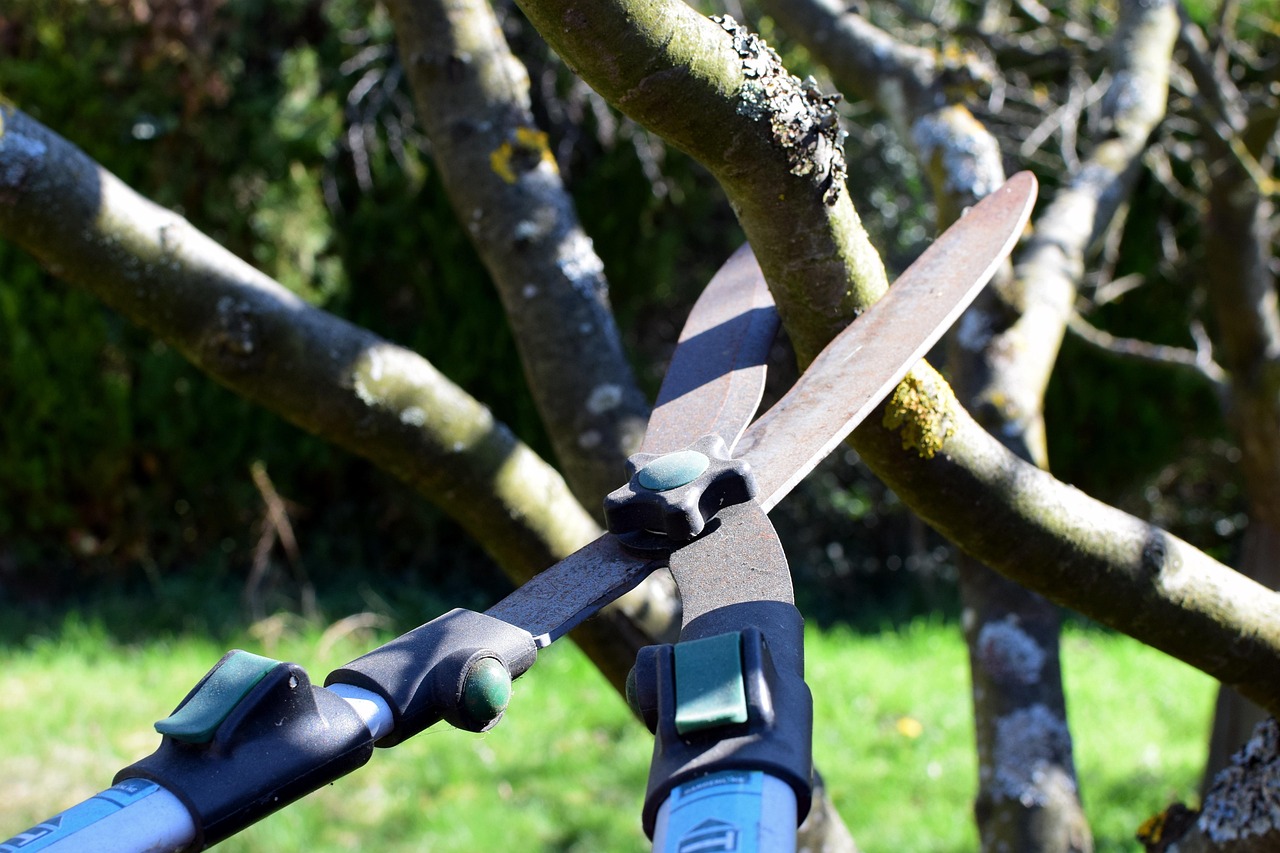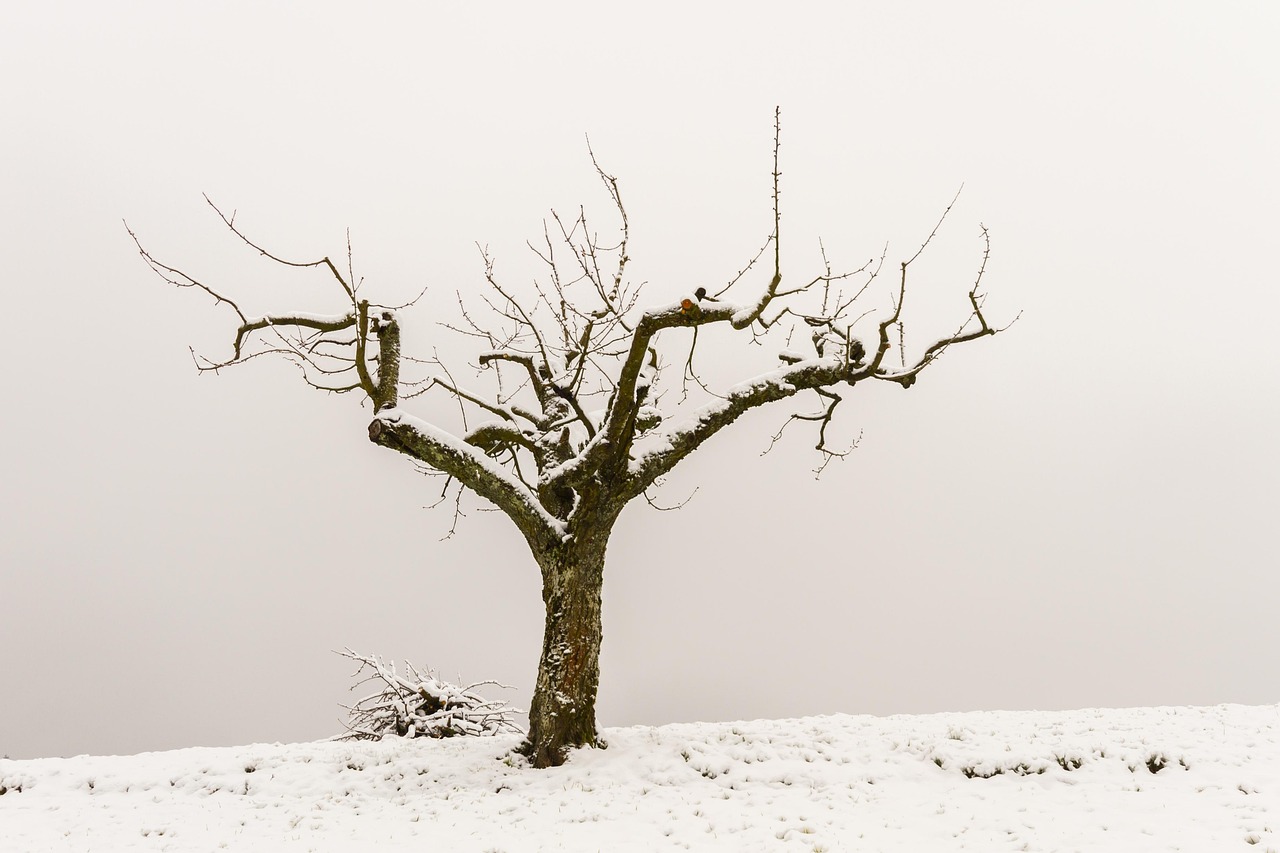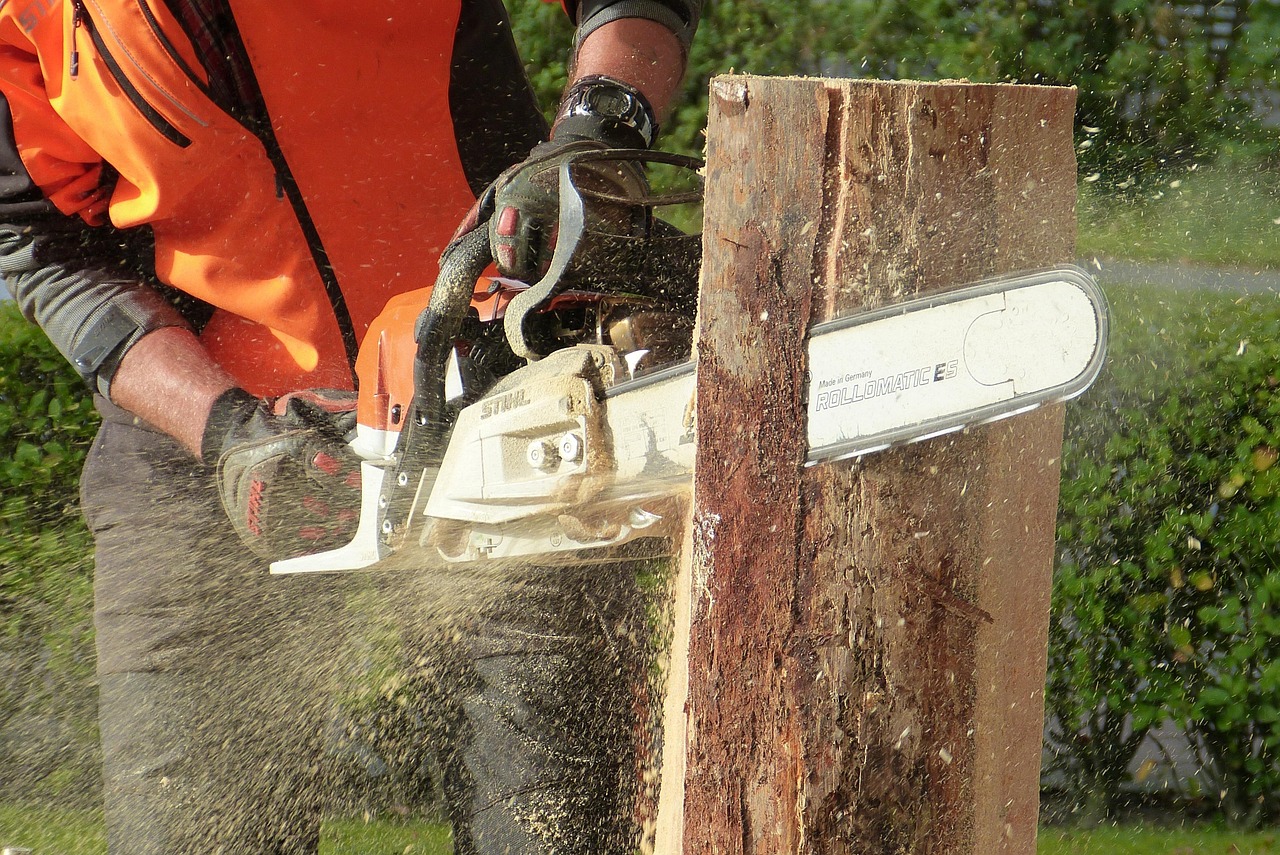Tree pruning methods to reduce shade density include selective thinning, crown raising, and heading cuts. These techniques help improve light penetration and air circulation, promoting healthier tree growth while managing shade levels in the landscape.
Pruning trees is an essential practice for maintaining their health and aesthetics. As trees grow, they can create dense canopies that limit sunlight from reaching the ground. This can hinder the growth of grass, flowers, or other plants beneath them. Therefore, understanding how to prune effectively is crucial for landscape management.

There are several reasons why reducing shade density is important. First, it allows more light to penetrate, which is beneficial for photosynthesis. Second, improved air circulation helps prevent fungal diseases. Lastly, managing tree density can improve the overall landscape appearance and increase property value.
Understanding Shade Density
Shade density refers to the amount of sunlight that passes through a tree’s canopy. Different tree species have varying growth habits and canopy structures, affecting how much light they block. Some trees naturally create dense canopies, while others allow more light to filter through. Understanding these differences is key when deciding how to manage shade in a landscape.
To effectively reduce shade density, it’s important to recognize the various pruning methods available. Each method serves a specific purpose and can be applied based on the desired outcome. Below are some common pruning methods used to manage shade density:

- Selective Thinning: This method involves removing specific branches within the canopy to increase light penetration. It focuses on the interior branches that may be overcrowded.
- Crown Raising: Crown raising involves removing lower branches to elevate the tree’s canopy. This technique is particularly useful for enhancing light access in areas below the tree.
- Heading Cuts: Heading cuts reduce the length of branches without removing them entirely. This method encourages branching and can help control the overall shape of the tree.
- Reduction Cuts: Reduction cuts shorten branches back to a lateral branch. This can help maintain the tree’s size while allowing more light to filter through the canopy.
Benefits of Pruning
Pruning is not just about aesthetics; it offers several practical benefits. Here are some key advantages of implementing proper pruning techniques:
- Improved Light Penetration: Pruning opens up the canopy, allowing sunlight to reach plants below.
- Enhanced Air Circulation: Increased airflow reduces humidity and the risk of diseases.
- Healthier Tree Growth: By removing dead or diseased branches, trees can focus their energy on healthy growth.
- Aesthetic Appeal: Well-pruned trees enhance the overall appearance of landscapes.
When to Prune
The timing of pruning is crucial for maximizing its effectiveness. Generally, late winter or early spring is considered the best time for most pruning activities. During this period, trees are still dormant, which minimizes stress and promotes healing once new growth begins.
However, specific species may have unique needs regarding pruning timing. For instance, flowering trees that bloom in spring should be pruned right after their flowers fade. Conversely, trees that flower in summer can be pruned in early spring before new growth starts.

Tools for Pruning
Having the right tools is essential for effective pruning. Here are some common tools used in tree pruning:
| Tool | Description |
|---|---|
| Hand Pruners | Ideal for small branches and precise cuts. |
| Loppers | Used for cutting larger branches with more leverage. |
| Saw | Necessary for cutting thicker branches that cannot be managed by pruners or loppers. |
| Pole Pruner | Allows access to high branches without needing a ladder. |
In addition to using proper tools, it’s important to follow correct pruning techniques to minimize damage to the tree. Making clean cuts at appropriate angles promotes faster healing and reduces the risk of disease entry.
Common Mistakes in Pruning
Even experienced gardeners can make mistakes when pruning. Here are some common pitfalls to avoid:

- Over-Pruning: Removing too many branches can stress the tree and lead to poor health.
- Poor Cutting Technique: Incorrect cuts can harm the tree and lead to improper healing.
- Ignoring Tree Species Needs: Each species has specific requirements; ignoring these can result in irreversible damage.
Avoiding these mistakes will enhance the effectiveness of your pruning efforts and contribute to a healthier landscape overall.
Advanced Pruning Techniques
In addition to basic pruning methods, there are advanced techniques that can help manage shade density more effectively. These methods require a deeper understanding of tree biology and growth patterns. Implementing these techniques can enhance the overall health of trees while achieving the desired light levels in the landscape.
Thinning Cuts
Thinning cuts involve removing entire branches back to their point of origin. This technique not only reduces shade but also encourages the growth of lateral branches. Thinning cuts can be beneficial for maintaining a tree’s natural shape and structure.
- Benefits of Thinning Cuts:
- Allows more light to penetrate the canopy.
- Reduces wind resistance, which can help prevent storm damage.
- Improves air circulation, reducing the likelihood of disease.
- When to Use:
- Best performed on mature trees with dense canopies.
- Ideal during late winter or early spring when trees are dormant.
Crown Reduction
Crown reduction is another advanced technique aimed at reducing the overall height of a tree while maintaining its shape. This method involves shortening branches back to a lateral branch or bud. Crown reduction is particularly useful for trees that have outgrown their space but still need to maintain a healthy structure.
- Advantages of Crown Reduction:
- Maintains the tree’s shape while reducing shade.
- Limits the potential for damage from high winds.
- Encourages new growth and branching.
- Proper Technique:
- Always cut at a 45-degree angle to facilitate water runoff.
- Avoid cutting too close to the trunk, which can lead to decay.
The Role of Timing in Pruning
Timing is critical when it comes to effective pruning. Each season offers different benefits and risks depending on the tree species. Understanding when to prune can significantly impact the success of your efforts in reducing shade density.
Seasonal Considerations
The following table outlines the best times for pruning various types of trees:
| Tree Type | Best Time to Prune | Notes |
|---|---|---|
| Deciduous Trees | Late Winter to Early Spring | Before bud break; promotes strong growth. |
| Spring-Flowering Trees | Immediately After Blooming | Avoiding winter damage to flower buds. |
| Summer-Flowering Trees | Early Spring | Before new growth begins. |
| Evergreens | Late Winter or Early Spring | Minimizes stress and enhances growth. |
Sustainable Pruning Practices
Sustainability is an important consideration in tree management. Employing sustainable pruning practices not only benefits individual trees but also contributes positively to the environment. Here are some sustainable approaches to consider:
- Use Organic Methods: Avoid chemical treatments that can harm beneficial organisms in the soil and surrounding ecosystem.
- Recycle Pruned Material: Chips from pruned branches can be used as mulch, helping to retain moisture and suppress weeds.
- Promote Biodiversity: Prune in ways that support the health of multiple tree species, ensuring a diverse and resilient landscape.
The Impact of Pruning on Wildlife
Tree pruning can also affect local wildlife. Many animals depend on trees for habitat, food, and shelter. Understanding these relationships is essential when planning pruning activities.
For example, many birds nest in trees during spring. Therefore, pruning during late winter is ideal to avoid disrupting nesting activities. Additionally, some trees produce fruits that serve as food sources for various wildlife species. Pruning should be done thoughtfully to ensure that these resources remain available.
- Birds: Many species use tree canopies for nesting and shelter. Pruning should be timed to avoid disturbing nesting seasons.
- Mammals: Animals such as squirrels rely on trees for food and nesting sites. Careful management helps maintain these habitats.
- Pollinators: Trees that produce flowers attract pollinators. Timely pruning can promote healthy flowering cycles.
By considering the ecological impact of pruning, you can create a healthier environment for both trees and wildlife while effectively managing shade density in your landscape.
Pruning Techniques for Specific Tree Types
Different tree species have unique growth habits and requirements, which means that pruning techniques should be tailored accordingly. Understanding the specific needs of various trees can help maximize light penetration while maintaining their overall health and aesthetics. Below, we outline effective pruning methods for several common tree types.
Fruit Trees
Fruit trees require careful pruning to ensure healthy fruit production. Proper pruning can help manage shade density and improve air circulation, reducing the risk of disease.
- Pruning Time: Late winter or early spring is ideal for most fruit trees, just before new growth begins.
- Techniques:
- Open Center Pruning: This technique removes the central leader to create a vase-like shape. It allows sunlight to reach all parts of the tree.
- Thinning Cuts: Removing selected branches helps improve air circulation and light exposure.
Shade Trees
Shade trees are often pruned to manage their height and spread. The goal is to reduce shade density while preserving the tree’s overall form.
- Pruning Time: Late winter or early spring is best for most shade trees, as it minimizes stress and encourages robust growth.
- Techniques:
- Crown Thinning: Selectively removing branches helps increase light penetration while maintaining the tree’s natural shape.
- Crown Raising: Removing lower branches elevates the canopy, which can help reduce shade on lawns and gardens below.
Ornamental Trees
Ornamental trees often serve aesthetic purposes in landscapes. Pruning these trees helps maintain their shape while reducing excessive shade.
- Pruning Time: Late winter to early spring is ideal for most ornamental trees.
- Techniques:
- Heading Cuts: These cuts reduce branch length and encourage bushier growth.
- Structural Pruning: Focus on developing a strong central leader and removing weak branches for improved form.
Understanding Tree Growth Patterns
To effectively prune trees, it’s important to understand their growth patterns. Knowing how trees grow will help you make informed decisions about which branches to prune and when.
Growth Phases
Trees typically go through several growth phases: juvenile, mature, and declining. Each phase has different pruning needs:
- Juvenile Phase: In this stage, trees grow rapidly. Pruning encourages strong structure and can help shape the tree for future growth.
- Mature Phase: Mature trees require maintenance pruning to remove dead or diseased branches and manage canopy density.
- Declining Phase: As trees age, they may need more intensive care. Focus on removing unhealthy branches to prolong life.
The Importance of Tree Structure
A tree’s structure significantly affects its health and ability to withstand environmental stressors. Proper pruning can enhance structural integrity:
- Crown Shape: Maintaining a balanced crown shape helps distribute weight evenly and reduces the risk of branch failure.
- Branch Spacing: Ensuring adequate spacing between branches allows for better airflow and light penetration.
Professional Pruning Services
While many homeowners can manage basic pruning tasks, some situations require professional assistance. Hiring an arborist or tree care professional can ensure that the job is done correctly and safely.
Benefits of Hiring Professionals
- Expertise: Professionals have training in tree biology and can identify issues that may not be visible to the untrained eye.
- Safety: Pruning large or tall trees can be dangerous. Professionals have the right equipment and training to perform the job safely.
- Proper Techniques: Experienced arborists use the best practices suited for each tree species, ensuring healthy results.
What to Look for in a Tree Care Service
If you decide to hire a professional, consider the following factors:
- Certification: Look for certified arborists who have completed training in tree care.
- Insurance: Ensure the company has liability insurance to protect you in case of accidents.
- References: Ask for references or reviews from previous clients to gauge the quality of their work.
Selecting the right professionals can help ensure that your trees are pruned effectively while promoting their long-term health and vitality.
Maintaining a Pruning Schedule
Establishing a regular pruning schedule is essential for maintaining tree health and managing shade density. A well-planned schedule allows you to keep track of when specific trees need attention based on their growth patterns and seasonal needs.
Create a Pruning Calendar
Your pruning calendar should include:
- Tree Species: Identify each tree type in your landscape to determine its specific pruning needs.
- Best Time to Prune: Note the optimal times for pruning based on species requirements.
- Yearly Checklist: Create a checklist that outlines which trees need pruning each year, ensuring none are overlooked.
A well-maintained schedule will help you manage your landscape effectively while promoting healthy growth in all your trees.
Additional Considerations for Pruning
Beyond the basic techniques and scheduling discussed, there are several additional considerations that can enhance your approach to tree pruning. Being mindful of environmental conditions, local regulations, and personal safety can significantly improve the outcomes of your pruning efforts.
Environmental Conditions
Weather plays a crucial role in the effectiveness of pruning. Here are some factors to consider:
- Moisture Levels: Pruning during dry weather can help prevent disease spread. Wet conditions can increase the risk of fungal infections at the cut sites.
- Temperature: Avoid pruning during extreme temperatures. Cold weather can stress trees, while excessive heat can lead to sap loss and increased vulnerability.
- Wind Conditions: Strong winds can make pruning more dangerous and less effective. Choose calm days for safer working conditions.
Local Regulations and Guidelines
Before starting any pruning project, it is important to be aware of local regulations regarding tree care. Some municipalities have specific guidelines on tree maintenance, especially for public trees or those in conservation areas. Here are some points to consider:
- Protected Species: Certain tree species may be protected by law, requiring special permissions for pruning or removal.
- Tree Preservation Orders: If your trees are subject to preservation orders, consult local authorities before proceeding with any pruning activities.
- Neighborhood Guidelines: If you live in a community with a homeowners association (HOA), review their rules concerning tree maintenance.
Personal Safety and Best Practices
Safety should always be a priority when pruning trees. Here are some best practices to ensure a safe pruning experience:
- Wear Protective Gear: Use gloves, goggles, and hard hats if necessary to protect yourself from falling branches.
- Use Proper Ladders: Ensure ladders are stable and positioned correctly to avoid accidents when working on taller trees.
- Know Your Limits: If a tree is too large or complicated to prune safely, consider hiring a professional arborist.
Final Thoughts
Tree pruning is an essential practice for managing shade density and promoting the health of your landscape. By understanding various techniques, timing considerations, species-specific needs, and safety measures, you can effectively enhance light penetration and air circulation while maintaining beautiful trees.
Implementing a well-structured pruning schedule tailored to your specific landscape will help ensure that each tree receives the appropriate care it requires. Additionally, being mindful of environmental conditions and local regulations further supports responsible tree management.
Ultimately, successful tree pruning promotes not only the aesthetic value of your yard but also contributes positively to the overall ecosystem. Healthy trees provide shade, reduce energy costs, enhance property values, and support local wildlife. Therefore, investing time and effort into proper pruning practices is beneficial for both your immediate environment and the broader ecological community.
As you embark on your tree pruning journey, remember that knowledge and practice are key. Stay informed about the latest techniques, tools, and best practices in arboriculture. With careful attention and regular maintenance, your trees will thrive for years to come, providing beauty and benefits for your landscape and beyond.
